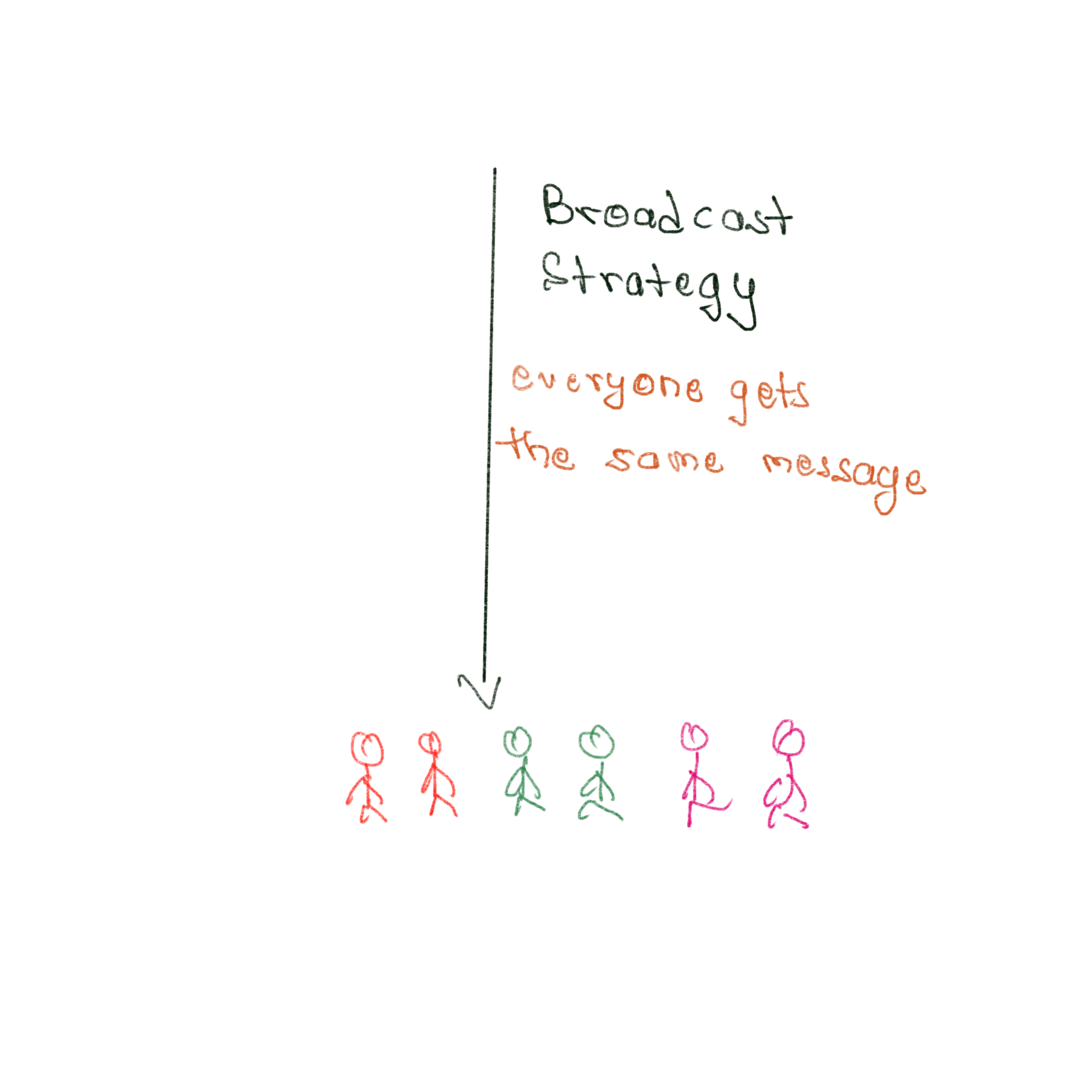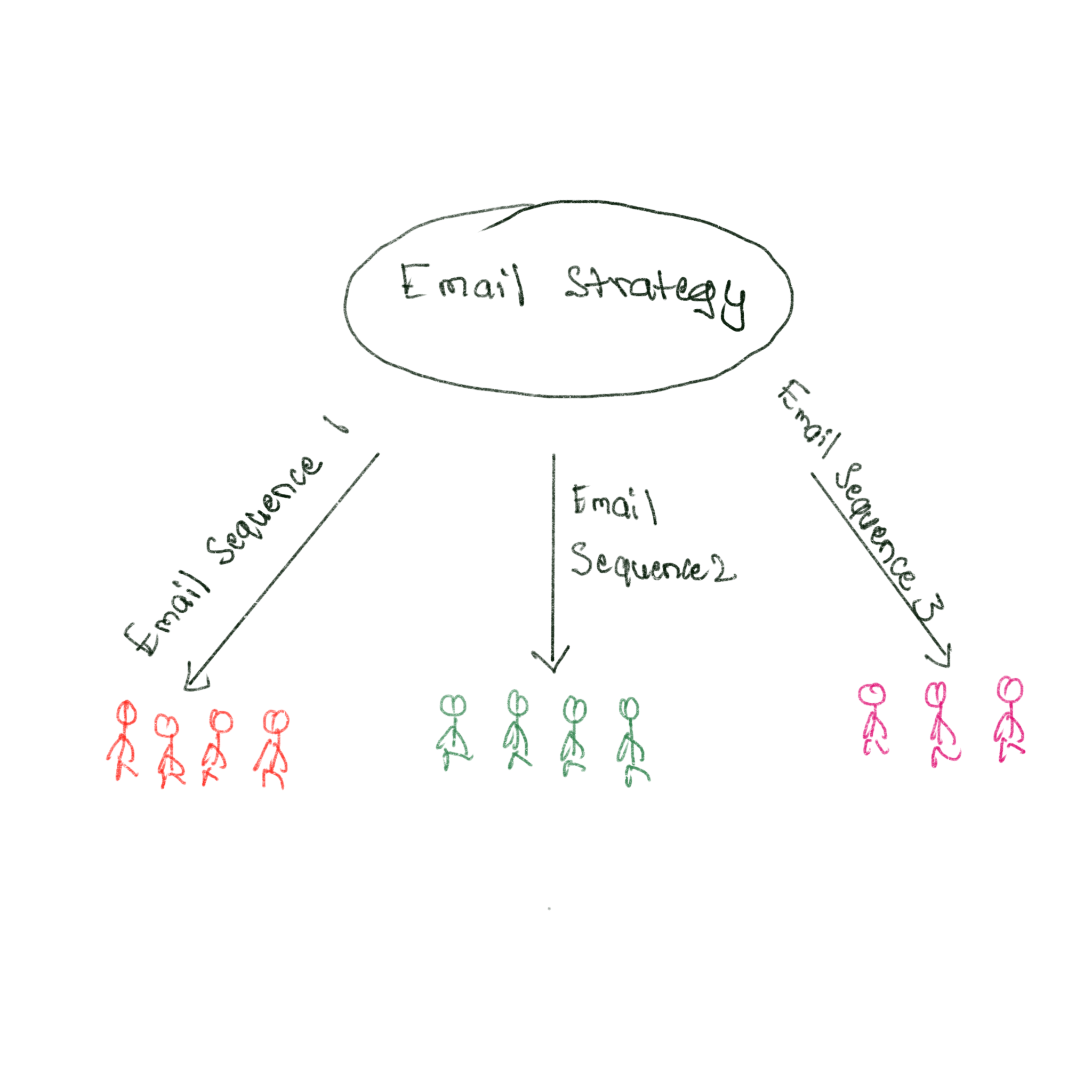One of my distant relatives loves dancing but is quite terrible at ‘reading the room.’ During our family gatherings, it’s not unusual for her to whip out her phone and start showing everyone videos of her dancing to different Bollywood songs. It’s cute and interesting for approximately 3 minutes, after which everyone gets impatient.
Oblivious to what is happening, her excitement is never dampened. There is a clear mismatch in expectations, but she doesn’t care.
A similar thing happens when we launch our product
We are excited to make some quick sales. We profusely type email after email and bombard the entire email list with them.
Somehow, we fail to read the room.
What we need to do instead is create an experience for our audience that pulls them towards our product. We need to take them to a place where they not only accept the promotion of our product but in fact, are excited by it.
Let’s look at three email marketing strategies that can be used for Product Promotion.
Broadcasters
Broadcasters use a machine-gun approach and shoot each and every promotion email to all their subscribers. If someone is subscribed to the list, they will receive all the promotional emails. No exceptions.
The advantage of a broadcast strategy is that it’s easy to implement. You write an email, hit publish, and boom, it pops into the inbox of all your subscribers.

Broadcast strategy is broken
The limitation of the broadcast strategy is that it does not cater to the unique context of the subscribers. This strategy completely ignores the fact that every subscriber is at a different stage, facing different challenges and desires different outcomes.
While quick sales are tempting, broadcasting our product promotion to everyone can annoy our subscribers, especially when they are not ready for it. This damages our relationships with them and results in low open rates and click rates.
Is there a better way? Let’s look at Segmenters.
- Segmenters
Segmenters send product promotion emails to a specific group of people. If broadcasting is about using a machine gun, segmenting is about using a shotgun. You don’t email everyone but only the subscribers to whom the product is relevant.
Let’s say that I launched a course on “How to write a Sales Page,” and my email list consists of Start-up Founders and Copywriters. Assuming that Start-Up Founders would probably not be interested in copywriting, I can exclude them from my promotion emails by sending emails only to the Copywriters on my list.
Even within Copywriters, I could promote this course only to copywriters who are beginners as it would be more relevant to them.

This targeted approach doesn’t just benefit potential customers who receive relevant information they can use; it also shows respect for their time and preferences. This builds trust and goodwill, ultimately leading to stronger relationships and better marketing outcomes.
(As an aside, I have learned email marketing from Andre Chaperon, who is very bullish on the approach I mentioned above. Andre enjoys an email open rate of 83%, which is mindboggling. Andre’s email strategy, however, is more nuanced than this. We will get to that in a bit.)
The option to opt-out
We can further boost this approach by giving subscribers an option to opt-out. My email could say, “Hey, for the next few days, I am going to talk about my new product on ‘Writing a Sales Page’. If this is not of interest to you, you could opt out of this promotion.”
With this option to opt-out, you are giving subscribers a chance to receive only the emails they find relevant.
But we can take it up a notch further. Guys and gals, let me introduce you to the Bridge Builders, the ultimate segmentation strategy I learned from Andre Chaperon and Shawn Twing.
Bridge-builders
Bridge builders create a context of the highest level. This approach is based on generosity, empathy, and permission-marketing.
What’s unique about Bridge Builders?
Bridge builders use the concept of hand-raising to send promotional emails to highly motivated subscribers. This means that your product offer emails are sent only to those subscribers who have actively raised their hands and said, “Hey! I want to receive this promotion. Please, please send it to me?”
How can the subscribers raise their hands?
It starts with the value newsletter that is broadcasted to all the subscribers. The value newsletter gives them an opportunity to opt-in to the promotion.
Here’s an example of how Shawn Twing and Andre Chaperon used the hand-raise strategy to promote their course – The Writing Masterclass.
Only the subscribers who click on the link (or raise their hands) get the next set of emails, and those who don’t get anything.
This approach ensures that you protect your relationship with the subscribers and prioritize ‘permission-marketing’ over quick-sale. You also create intrigue and pull prospects toward your product rather than shoving it down their throat.
It’s like saying – Hey, this is an exclusive group. Want to join?
What if subscribers ignore me
If you decide to be a bridge builder, you will face crippling fear – What if very few people raise their hand?
The fear is valid. Sure, we may be compromising on the short-term sales we get by broadcasting and blasting everyone with our emails.
But we are getting something much more valuable in return. The trade-off is worth it.
We are protecting our relationships with the subscribers. And this drastically increases their chances of buying our product at a future date. It is not a missed opportunity, at least in the long run. We are prioritizing long-term relationships over short-term sales.
To Summarize
When we decide to promote our products through email, we have the option of blasting everyone with the promotion or sending it to people who are actually motivated to hear from you. I am much more motivated to try the latter. Unlike the distant relative who forces everyone to watch her dancing videos.
